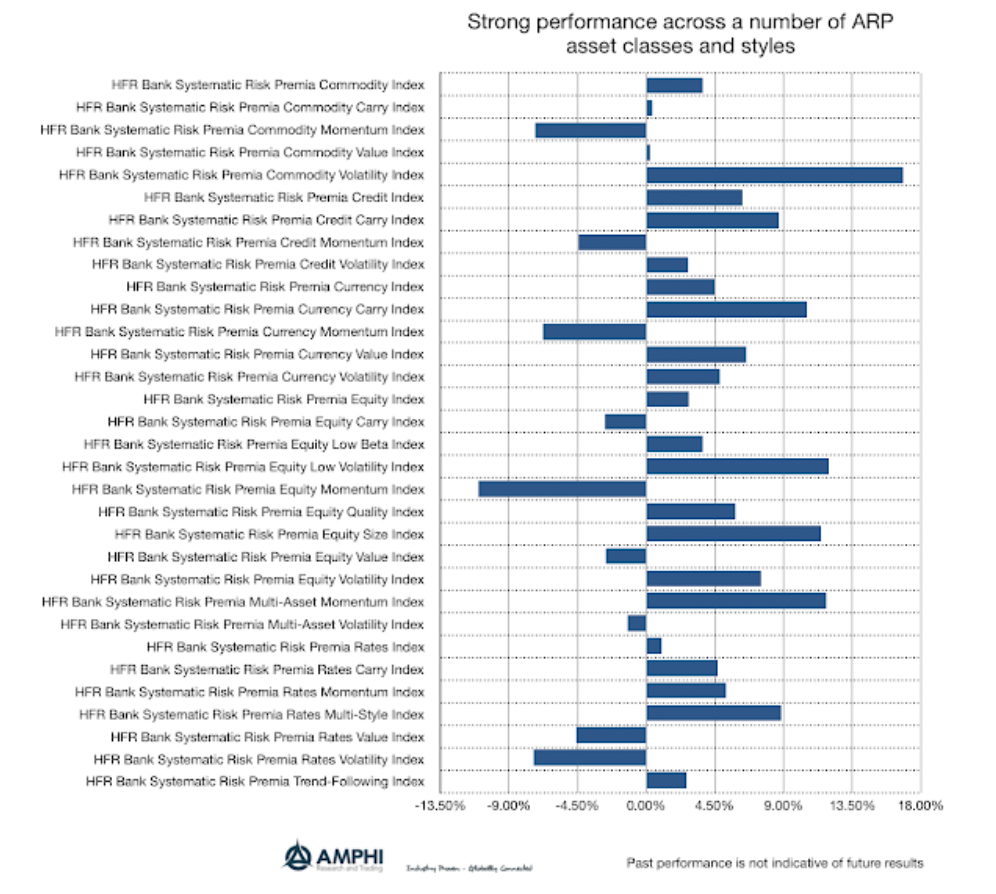Archives
How many animals should be in the factor zoo?
Investment factor growth has exploded to the point that are now close to 400 identified through research published leading finance journals. This factor explosion has been called the factor zoo and it is overcrowded. A careful review of the statistical testing procedures will tell us that it is highly unlikely that all of these identified factors will be true. Many are statistically significant only by chance given multiple testing problems. Additionally, if we impose transaction costs on these factors, their profitability will be diminished and in many cases not useful.

IASG Fund Services LLC (“IASG-FS”) Launches to Promote a Highly Disruptive Fund Administration Software to CTAs, CPOs and Other Alternative Managers
CHICAGO, APRIL 24, 2019 – Institutional Advisory Services Group (“IASG”), an independent advisory firm specializing in alternative investments for institutional and high net worth investors, is pleased to announce the formation of a new company: IASG – Fund Services or “IASG-FS”. Incorporated in 2019, IASG-FS will offer fund services to investment managers. This new company, […]
Factor Investing – Not as easy as many expect
Investors can form exaggerated expectations on what can be the potential return performance from factors. Some have described a “zoo” of factors. There are now hundreds of factors that have been analyzed and reported in the academic literature. Nevertheless, many have been hard to replicate, show performance return declines after being researched, and have failed when tested out of sample under realistic market conditions. These poor results may be from data mining, not accounting for transaction costs, data mining, poor design, and potential crowding. There are successful factors that have stood the test of time, yet even their performance has been time varying and may be less successful factor after accounting for all costs. Don’t be disappointed if actual returns are less than what is reported in academic studies.
Risk Management – Controlling what you have not thought of
If you have an asset that has some market risk but a large portion that is unexplained, the risks you face are different. You still can either leave the market risk exposed or hedged, but the majority of the risk cannot be explained. Hence, it cannot be truly hedged. You can conduct further analysis to measure the risks from other factors but you may still be left with a high percentage unexplained. You may have thought of everything with respect to your risks, but there is a lot leftover.
Cognitive Priming and Trend-following – Not a Bad Thing
Cognitive priming is a real effect that has often not been discussed with investment decisions and behavioral finance. Suggestions can be used to steer the behavior of investors. Priming is the use of stimulus to create a memory effect or create a temporary increase in accessibility of thoughts and ideas. It is the non-conscious use of memory. It could be used to increase both positive and negative thoughts, ideas, and behavior. Businesses have constantly used priming in advertising to help steer or suggest positive memories. Psychologists have tested priming for years and find that the power of suggestion or linkage is real and extensive. At the extreme, think of Christopher Nolan’s movie Inception on the idea of implanting ideas in memory.
Liquidity Risk: Why Every Investor Needs an Exit Strategy
If there is an adverse market move and you want to change portfolio allocations and sell some securities, will you get a fair price? Any downside situations that investors will face will face a liquidity shortage. This is different than thinking about illiquid investments, where the knowledge concerning illiquidity is known. The IMF Global Financial […]
Be a Coach Belichick 5-tool Investment Leader
He (Bill Belichick) is a five-tool leader, adept at strategy, tactics, preparation, execution, and what you might call situational intuition, the rare ability to know which among the first four is required and when.
The Growing Impact of Industry Domination on Futures Markets
Few will disagree that competition through a diverse set of independent traders is good for futures markets trading. Still, this issue should be broadened to the subtle impact of general competition across firms in the economy, not just the futures markets themselves. A growing set of recent research suggests that the US is becoming less […]
Monetary regime change – A crisis catalyst is needed
Reviewing the first quarter financial performance, the dominant macro theme was the change in Fed policy actions. The same could be said about the EU—no rate increase and no solid trend for normalization. The new macro focus is on the choice of Fed governors. More important than any policy comments or change in Fed governors […]
The Fed’s Independence: History, Current Issues, and Implications for Financial Markets
Is the Fed independent? Should it be independent? Has independence been an important topic in the past? More specifically, should new Fed governors be biased to economic growth, consistent with current fiscal policies over expected inflation, focus on price stability? The current discussion associated with new Fed governors is nothing new. The Fed has always fought for as much independent as possible, yet the Fed is a creature of Congress.
Maximizing Investment Success: A Guide to Developing and Weighing Multiple Options
Paul Nutt, a leading decision-making researcher – Only 15% of the case studies saw decision-makers actively seek out new options than what was available at the outset. Only 29% of organizational decisions contemplated more than one alternative. (From Farsighted by Steve Johnson) There is more to decision-making than “whether or not”. Too often, decision-making is bereft of choices. Everything […]

Strong first quarter returns for selected alternative risk premia
Selected alternative risk premia showed strong performance during the first quarter. There is significant tracking error with the HFR risk premium indices versus individual bank risk premia swaps, but they can provide some suggestive rankings. This strong performance should not be surprising given the large reversal of with equity beta and the strong moves in global bond markets. A couple of major themes emerged for the first quarter centered around positive equity beta risk and falling volatility.
Explaining Hedge Fund Performance: Market Risk vs. Style Performance
Hedge fund performance was dominated by the exposure to market risk as those fundamental equity funds that held more market risk dominated style performance. However, the average returns mask the large dispersion across styles. We still use indices for analysis because it does provide some information on what the average investor may expect. For example, while CTAs were down, on average, for the first quarter, anecdotal evidence from managers sending me reports show some up in the double digits for the first quarter. Winners made big money in the last quarter.